Idit Diamant
Inverse Problem Sampling in Latent Space Using Sequential Monte Carlo
Feb 09, 2025Abstract:In image processing, solving inverse problems is the task of finding plausible reconstructions of an image that was corrupted by some (usually known) degradation model. Commonly, this process is done using a generative image model that can guide the reconstruction towards solutions that appear natural. The success of diffusion models over the last few years has made them a leading candidate for this task. However, the sequential nature of diffusion models makes this conditional sampling process challenging. Furthermore, since diffusion models are often defined in the latent space of an autoencoder, the encoder-decoder transformations introduce additional difficulties. Here, we suggest a novel sampling method based on sequential Monte Carlo (SMC) in the latent space of diffusion models. We use the forward process of the diffusion model to add additional auxiliary observations and then perform an SMC sampling as part of the backward process. Empirical evaluations on ImageNet and FFHQ show the benefits of our approach over competing methods on various inverse problem tasks.
Efficient Image Restoration via Latent Consistency Flow Matching
Feb 05, 2025Abstract:Recent advances in generative image restoration (IR) have demonstrated impressive results. However, these methods are hindered by their substantial size and computational demands, rendering them unsuitable for deployment on edge devices. This work introduces ELIR, an Efficient Latent Image Restoration method. ELIR operates in latent space by first predicting the latent representation of the minimum mean square error (MMSE) estimator and then transporting this estimate to high-quality images using a latent consistency flow-based model. Consequently, ELIR is more than 4x faster compared to the state-of-the-art diffusion and flow-based approaches. Moreover, ELIR is also more than 4x smaller, making it well-suited for deployment on resource-constrained edge devices. Comprehensive evaluations of various image restoration tasks show that ELIR achieves competitive results, effectively balancing distortion and perceptual quality metrics while offering improved efficiency in terms of memory and computation.
Bayesian Uncertainty for Gradient Aggregation in Multi-Task Learning
Feb 06, 2024Abstract:As machine learning becomes more prominent there is a growing demand to perform several inference tasks in parallel. Running a dedicated model for each task is computationally expensive and therefore there is a great interest in multi-task learning (MTL). MTL aims at learning a single model that solves several tasks efficiently. Optimizing MTL models is often achieved by computing a single gradient per task and aggregating them for obtaining a combined update direction. However, these approaches do not consider an important aspect, the sensitivity in the gradient dimensions. Here, we introduce a novel gradient aggregation approach using Bayesian inference. We place a probability distribution over the task-specific parameters, which in turn induce a distribution over the gradients of the tasks. This additional valuable information allows us to quantify the uncertainty in each of the gradients dimensions, which can then be factored in when aggregating them. We empirically demonstrate the benefits of our approach in a variety of datasets, achieving state-of-the-art performance.
De-Confusing Pseudo-Labels in Source-Free Domain Adaptation
Jan 03, 2024Abstract:Source-free domain adaptation (SFDA) aims to transfer knowledge learned from a source domain to an unlabeled target domain, where the source data is unavailable during adaptation. Existing approaches for SFDA focus on self-training usually including well-established entropy minimization and pseudo-labeling techniques. Recent work suggested a co-learning strategy to improve the quality of the generated target pseudo-labels using robust pretrained networks such as Swin-B. However, since the generated pseudo-labels depend on the source model, they may be noisy due to domain shift. In this paper, we view SFDA from the perspective of label noise learning and learn to de-confuse the pseudo-labels. More specifically, we learn a noise transition matrix of the pseudo-labels to capture the label corruption of each class and learn the underlying true label distribution. Estimating the noise transition matrix enables a better true class-posterior estimation results with better prediction accuracy. We demonstrate the effectiveness of our approach applied with several SFDA methods: SHOT, SHOT++, and AaD. We obtain state-of-the-art results on three domain adaptation datasets: VisDA, DomainNet, and OfficeHome.
Reconciling a Centroid-Hypothesis Conflict in Source-Free Domain Adaptation
Dec 07, 2022Abstract:Source-free domain adaptation (SFDA) aims to transfer knowledge learned from a source domain to an unlabeled target domain, where the source data is unavailable during adaptation. Existing approaches for SFDA focus on self-training usually including well-established entropy minimization techniques. One of the main challenges in SFDA is to reduce accumulation of errors caused by domain misalignment. A recent strategy successfully managed to reduce error accumulation by pseudo-labeling the target samples based on class-wise prototypes (centroids) generated by their clustering in the representation space. However, this strategy also creates cases for which the cross-entropy of a pseudo-label and the minimum entropy have a conflict in their objectives. We call this conflict the centroid-hypothesis conflict. We propose to reconcile this conflict by aligning the entropy minimization objective with that of the pseudo labels' cross entropy. We demonstrate the effectiveness of aligning the two loss objectives on three domain adaptation datasets. In addition, we provide state-of-the-art results using up-to-date architectures also showing the consistency of our method across these architectures.
HPTQ: Hardware-Friendly Post Training Quantization
Sep 26, 2021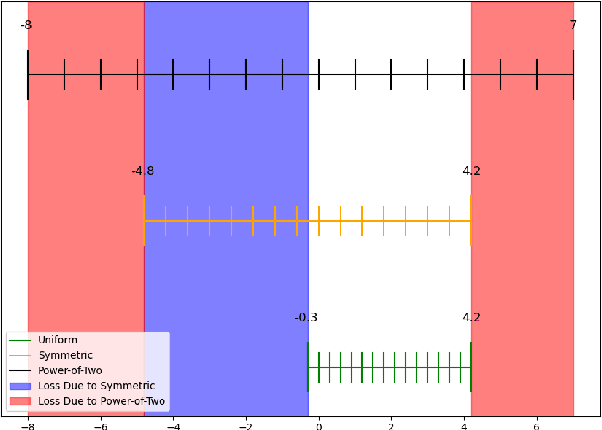

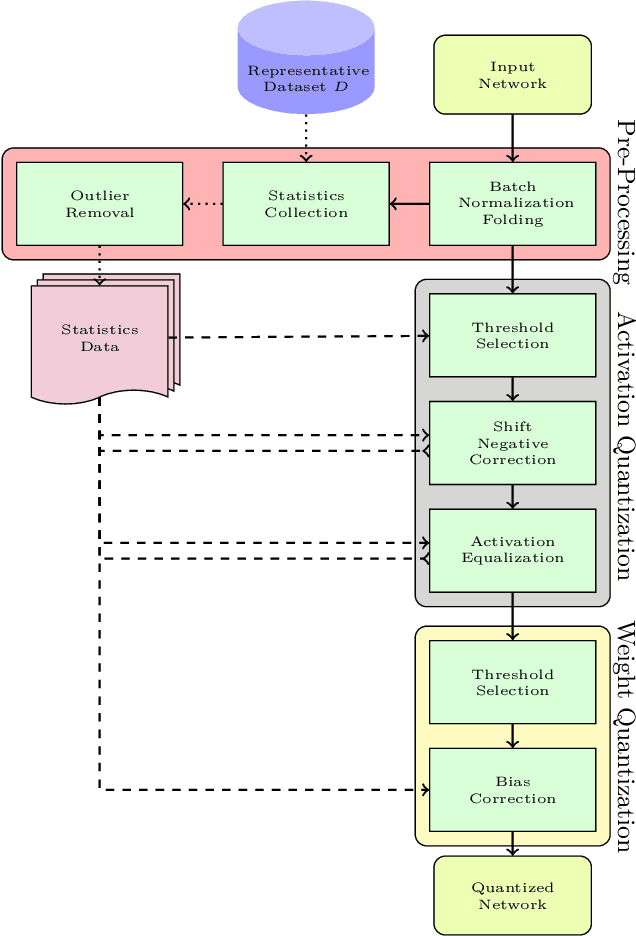
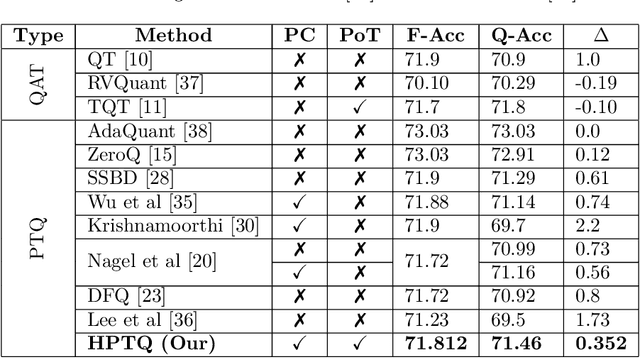
Abstract:Neural network quantization enables the deployment of models on edge devices. An essential requirement for their hardware efficiency is that the quantizers are hardware-friendly: uniform, symmetric, and with power-of-two thresholds. To the best of our knowledge, current post-training quantization methods do not support all of these constraints simultaneously. In this work, we introduce a hardware-friendly post training quantization (HPTQ) framework, which addresses this problem by synergistically combining several known quantization methods. We perform a large-scale study on four tasks: classification, object detection, semantic segmentation and pose estimation over a wide variety of network architectures. Our extensive experiments show that competitive results can be obtained under hardware-friendly constraints.
Multi-View Image-to-Image Translation Supervised by 3D Pose
Apr 12, 2021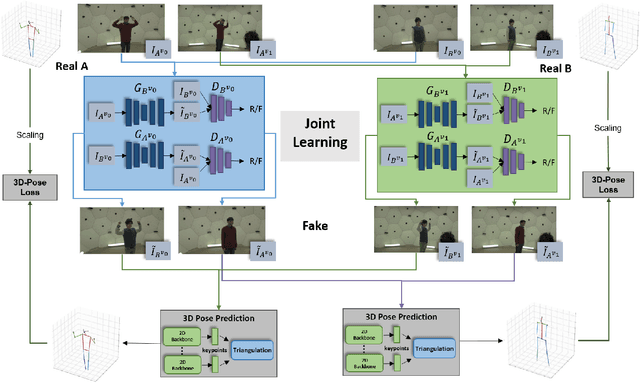
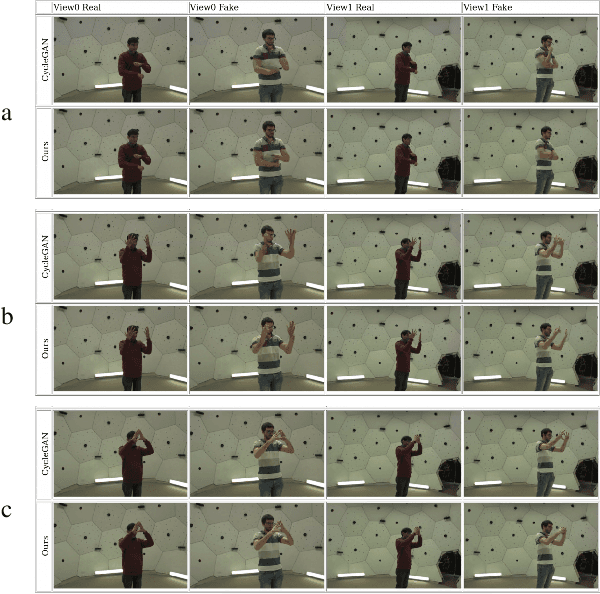
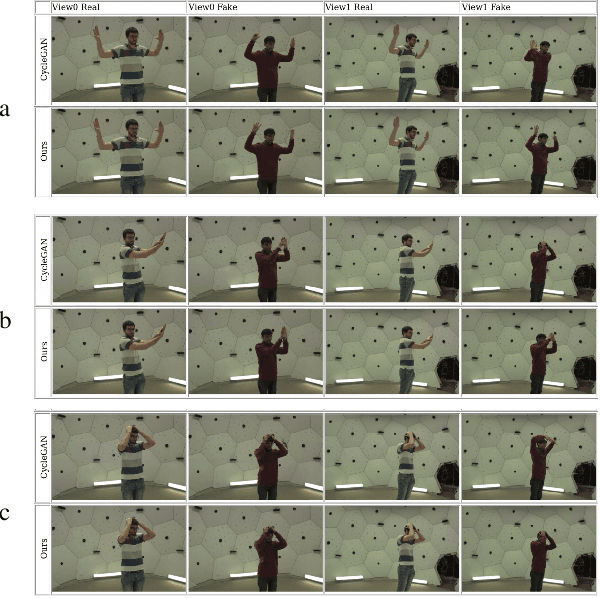

Abstract:We address the task of multi-view image-to-image translation for person image generation. The goal is to synthesize photo-realistic multi-view images with pose-consistency across all views. Our proposed end-to-end framework is based on a joint learning of multiple unpaired image-to-image translation models, one per camera viewpoint. The joint learning is imposed by constraints on the shared 3D human pose in order to encourage the 2D pose projections in all views to be consistent. Experimental results on the CMU-Panoptic dataset demonstrate the effectiveness of the suggested framework in generating photo-realistic images of persons with new poses that are more consistent across all views in comparison to a standard Image-to-Image baseline. The code is available at: https://github.com/sony-si/MultiView-Img2Img
GAN-based Synthetic Medical Image Augmentation for increased CNN Performance in Liver Lesion Classification
Mar 03, 2018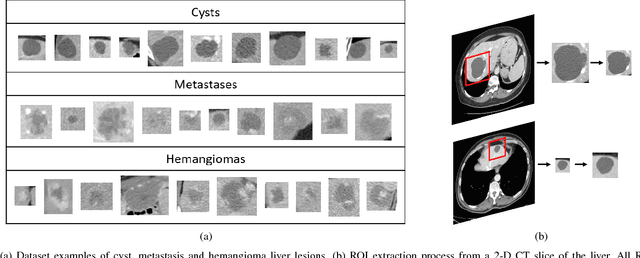
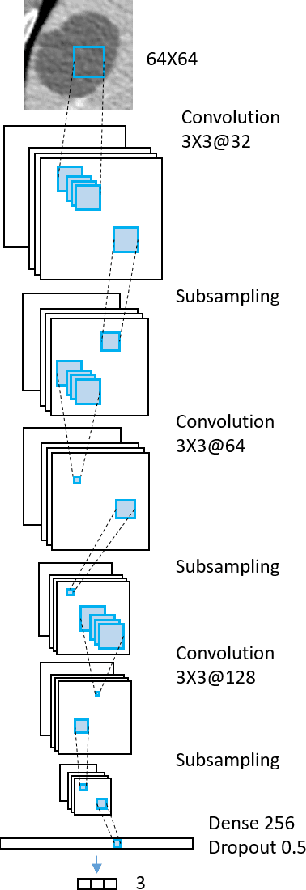
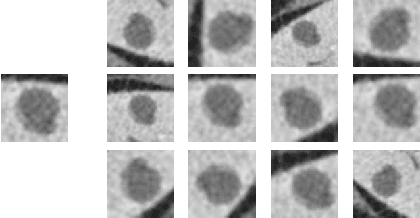
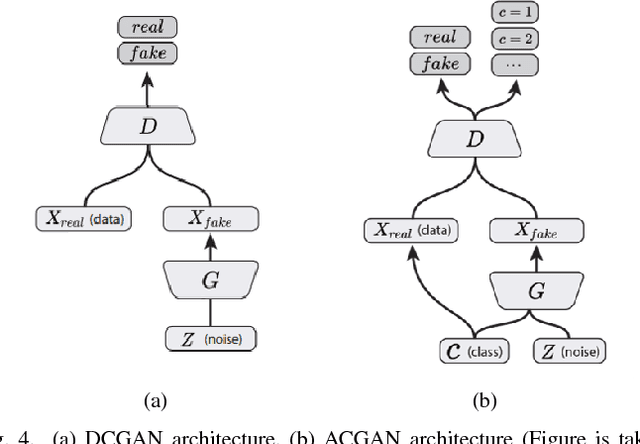
Abstract:Deep learning methods, and in particular convolutional neural networks (CNNs), have led to an enormous breakthrough in a wide range of computer vision tasks, primarily by using large-scale annotated datasets. However, obtaining such datasets in the medical domain remains a challenge. In this paper, we present methods for generating synthetic medical images using recently presented deep learning Generative Adversarial Networks (GANs). Furthermore, we show that generated medical images can be used for synthetic data augmentation, and improve the performance of CNN for medical image classification. Our novel method is demonstrated on a limited dataset of computed tomography (CT) images of 182 liver lesions (53 cysts, 64 metastases and 65 hemangiomas). We first exploit GAN architectures for synthesizing high quality liver lesion ROIs. Then we present a novel scheme for liver lesion classification using CNN. Finally, we train the CNN using classic data augmentation and our synthetic data augmentation and compare performance. In addition, we explore the quality of our synthesized examples using visualization and expert assessment. The classification performance using only classic data augmentation yielded 78.6% sensitivity and 88.4% specificity. By adding the synthetic data augmentation the results increased to 85.7% sensitivity and 92.4% specificity. We believe that this approach to synthetic data augmentation can generalize to other medical classification applications and thus support radiologists' efforts to improve diagnosis.
Modeling the Intra-class Variability for Liver Lesion Detection using a Multi-class Patch-based CNN
Jul 20, 2017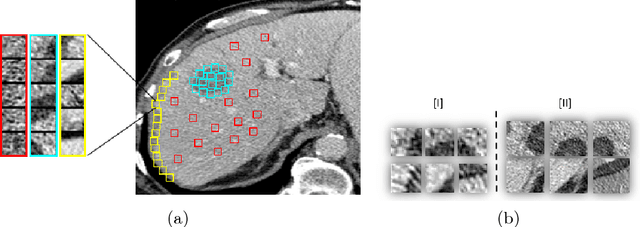

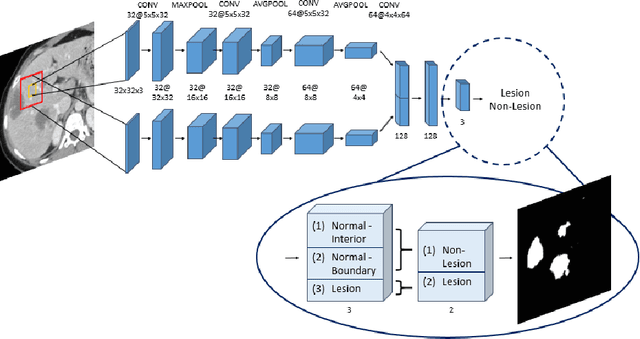

Abstract:Automatic detection of liver lesions in CT images poses a great challenge for researchers. In this work we present a deep learning approach that models explicitly the variability within the non-lesion class, based on prior knowledge of the data, to support an automated lesion detection system. A multi-class convolutional neural network (CNN) is proposed to categorize input image patches into sub-categories of boundary and interior patches, the decisions of which are fused to reach a binary lesion vs non-lesion decision. For validation of our system, we use CT images of 132 livers and 498 lesions. Our approach shows highly improved detection results that outperform the state-of-the-art fully convolutional network. Automated computerized tools, as shown in this work, have the potential in the future to support the radiologists towards improved detection.
 Add to Chrome
Add to Chrome Add to Firefox
Add to Firefox Add to Edge
Add to Edge